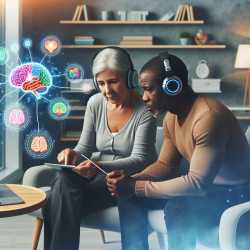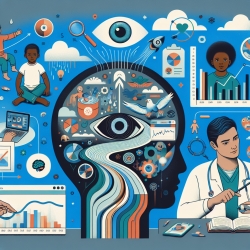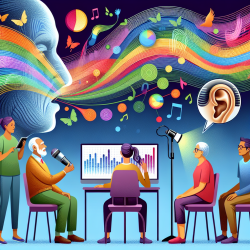Embracing the Future of Speech Therapy with Technology
In the ever-evolving field of speech-language pathology, technology is emerging as a powerful ally. The research article titled "Implementation and Effects of an Information Technology–Based Intervention to Support Speech and Language Therapy Among Stroke Patients With Aphasia: Protocol for a Virtual Randomized Controlled Trial" sheds light on the potential of technology to transform therapeutic practices. This blog will explore how practitioners can leverage these insights to enhance their skills and improve outcomes for individuals with aphasia.
The Promise of VoiceAdapt
The study focuses on VoiceAdapt, a mobile therapy app developed using a user-centered design framework. This app employs two evidence-based lexical retrieval treatments to aid individuals with aphasia in enhancing their naming abilities. The randomized controlled trial (RCT) aims to evaluate the feasibility and clinical efficacy of VoiceAdapt, providing critical insights into its impact on language and communication outcomes.
Key Findings and Implications for Practitioners
Preliminary results from the RCT suggest that technology-based interventions like VoiceAdapt can significantly improve language outcomes for individuals with aphasia. Here are some key takeaways for practitioners:
- Increased Intensity of Therapy: Apps like VoiceAdapt allow for more frequent and intensive practice, which is crucial for long-term recovery.
- Cost-Effective Solutions: Mobile apps provide a cost-effective means of delivering therapy, making it accessible to a broader population.
- Remote Accessibility: The ability to conduct therapy remotely is especially valuable in today's world, where in-person sessions may not always be feasible.
- User-Centered Design: Involving users in the design process ensures that the app meets their needs and enhances motivation to engage with therapy.
Encouraging Further Research and Implementation
While the initial findings are promising, there is a need for further research to validate and expand upon these results. Practitioners are encouraged to explore the following avenues:
- Conduct Additional Studies: More large-scale RCTs are needed to confirm the efficacy of app-based therapies and explore their impact on different populations.
- Integrate Technology into Practice: Consider incorporating technology-based solutions into existing therapy programs to enhance outcomes.
- Collaborate with Developers: Engage with app developers to provide feedback and ensure that future iterations of therapy apps meet the needs of both practitioners and patients.
Conclusion
The integration of technology into speech-language therapy represents a significant step forward in improving outcomes for individuals with aphasia. By embracing innovative solutions like VoiceAdapt, practitioners can enhance their skills and provide more effective, accessible therapy. The journey towards optimal therapeutic outcomes is ongoing, and further research will continue to illuminate the path forward.
To read the original research paper, please follow this link: Implementation and Effects of an Information Technology–Based Intervention to Support Speech and Language Therapy Among Stroke Patients With Aphasia: Protocol for a Virtual Randomized Controlled Trial.










